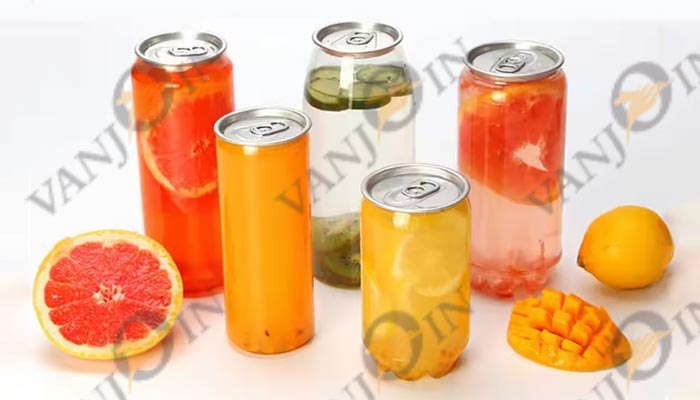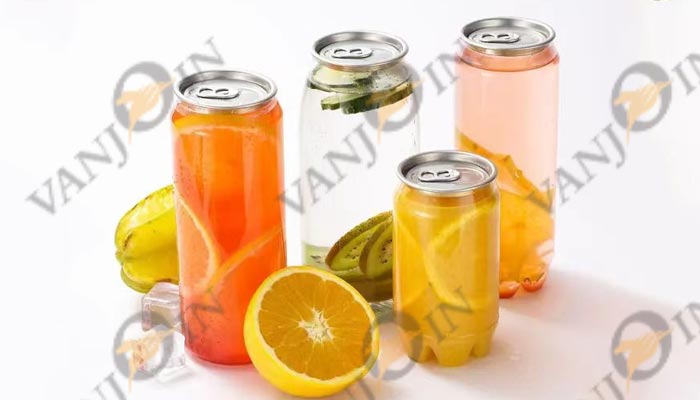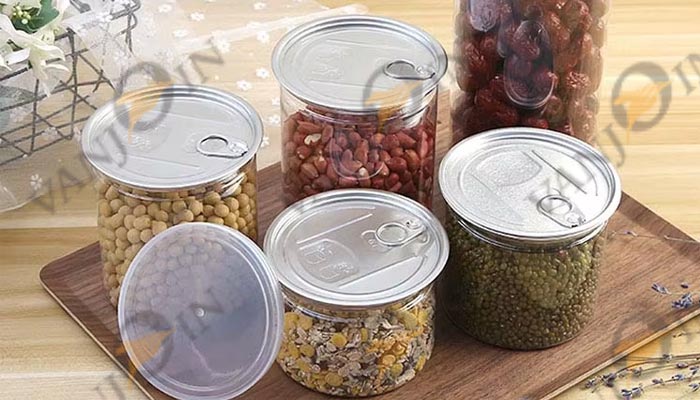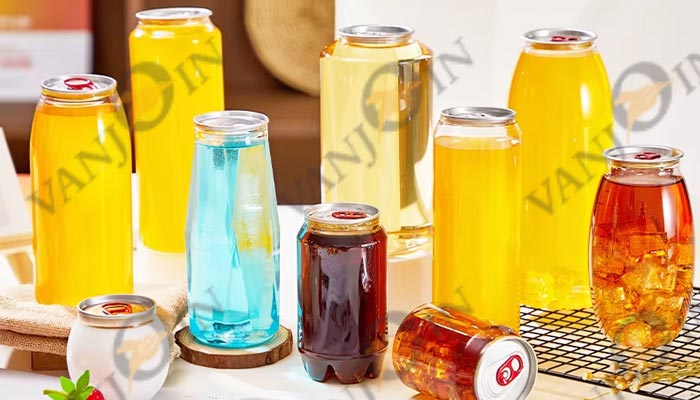Why Plastic Can Needs Easy-Open Lid
When it comes to plastic wide-mouth jars, many people tend to confuse plastic cans and cosmetic jars—and for good reason. At first glance, they often appear strikingly similar, featuring the familiar cylindrical shape and wide-opening design.
However, upon closer inspection, you’ll notice distinct structural differences that are far from arbitrary. These variations stem from precise considerations of functionality, safety standards, and user experience tailored to each industry’s unique needs.
This article will explore the logic behind these subtle yet critical distinctions—from materials and construction to industry regulations—helping you better differentiate between plastic wide-mouth jars and make informed choices based on your product’s specific requirements.

Plastic Can VS Plastic Cosmetic Jar
Material Differences
Food-grade plastic cans (like those for snacks or soda cans) must first meet strict food safety standards, requiring non-toxic, acid/alkali-resistant, and migration-resistant materials (to prevent plastic components from leaching into food). Common choices are PP and PET—both FDA-approved for direct food contact. PET offers excellent clarity, ideal for displaying food quality, while PP excels in heat resistance, making it the only microwave-safe food-grade plastic.
In contrast, cosmetic wide-mouth jars prioritize compatibility with formulations and aesthetics. Their material options (e.g., PETG, AS, ABS) are broader, balancing cost and transparency. Some premium wide-mouth jars even use composite materials for layered designs, enhancing visual appeal.
Differences in Opening Structures
While PET cans and plastic jars share the same CTC threading in their preform state, a closer inspection reveals a key distinction: PET cans feature a flared rim at the top of the thread, and that’s why plastic cans need an easy-open lid. This flared design is specifically engineered to accommodate easy-open lids, such as metal can lids or aluminum pull-tab lids, ensuring an airtight seal. Simply using a screw lid to seal this flared plastic can structure will result in an incomplete closure, ultimately compromising the package’s overall seal integrity.
In contrast, plastic wide-mouth jars have a smooth-threaded opening; their sealing performance primarily relies on screw-top closures or the addition of various sealing discs like PE or PP sealing discs, foam lid liner, pressure-sensitive liner, etc.
In cosmetic wide-mouth jars, only the interchangeable refill units (refillable inner) feature the same flared neck finish as PET cans. This shared structural characteristic enables both systems to utilize aluminum foil induction sealing for enhanced container integrity.

Sealing Method Differences
Unlike wide-mouth plastic cosmetic jars, Plastic canister with easy open lids require a specialized can sealing machine. Currently, there are two main types of can sealing machines in the market:
Industrial high-speed can sealing machine
Designed for mass production lines, suitable for continuous sealing of standard plastic cans and soda cans.
Compact benchtop can sealing machine
Developed for small-batch production, primarily used for on-demand sealing of ready-to-fill plastic-can-with-metal-lid.html" target="_blank ">food and beverage cans, offering flexible adjustments.
It is worth noting that investing in this can sealing machine is not a one-time cost. Since food and beverage cans come in various neck sizes, different-sized sealing heads are required. This means long-term, strategic packaging planning is essential, as it directly impacts equipment and accessory procurement costs.
Neck Size Differences
Plastic canisters with easy-open lids and cosmetic wide-mouth jars differ significantly in standard neck sizes. Due to their wider capacity range, Plastic canisters offer more diverse neck size options – typically 68mm, 75mm, 85mm or 100mm, 115mm for food packaging, while soda cans standardize at 55mm. These standardized dimensions ensure compatibility with common easy-open lids and screw caps. PET cans generally start from 150ml capacity, with 300ml-1000ml being most typical, extending up to 3000ml-6000ml for large food containers.
In contrast, cosmetic wide mouth jars feature fewer neck size variations, primarily 47mm, 68mm or 78mm. Their capacities are smaller too, typically 30ml-100ml for standard sizes, with larger jars reaching 300ml-1000ml maximum. The neck size directly determines compatible closure types, making proper specification crucial for both plastic cans and cosmetic packaging.

Differences in Base Groove Design
Beyond the neck structure, Plastic cans and cosmetic wide-mouth jars also differ in their base groove design. Food and beverage containers typically feature deeper base grooves compared to cosmetic jars, reflecting their distinct packaging requirements.
From a mechanical perspective, the deeper groove in plastic food cans increases the base’s support area, enhancing stability. Physically, this design also improves pressure resistance—particularly important for hot-fill products where plastic shrinkage during cooling could cause deformation. Carbonated beverage cans take this further with even deeper grooves to better distribute liquid pressure and prevent rupture from pressure fluctuations in cold environments.
In contrast, cosmetic wide mouth jars often have shallow grooves or flat bases. This prioritizes aesthetics while being functionally sufficient, as cosmetics face neither significant pressure differentials nor the high-density contents (like honey or jam) that demand reinforced packaging structures.
Are Plastic Canisters Suitable for Long-Term Use?
Plastic canisters are widely used in households. Many people repurpose these plastic containers after consuming the original contents (like nuts or candy) to store other dry goods, snacks, or grains due to their convenience and durability.
While PET is a recyclable plastic, its reuse requires proper care. Typically, PET plastic has a two-year lifespan. As a polymer with high chemical stability, it won’t easily degrade unless exposed to strong acids/alkalis – making limited reuse possible. However, it’s not designed for indefinite repeated use.
For safe secondary use with a plastic canister:
* Avoid direct sunlight exposure
* Never store pickled/acidic foods
* Don’t contact harsh chemicals
* Regularly check for discoloration, brittleness, or internal warping – these indicate material degradation and signal the need for replacement.
Remember: Though convenient, plastic canisters are temporary storage solutions, not permanent containers.

Where to Buy Plastic Canister with Can Lids and sealing machine
With over a decade of experience as a preform supplier, we operate our own complete blow-molding production line. We specialize in manufacturing both wide-mouth cosmetic jars and plastic canisters compatible with easy-open lids, as well as food and beverage PET containers. Contact us today to request free samples or discuss customized packaging solutions for your brand.
Related Information
